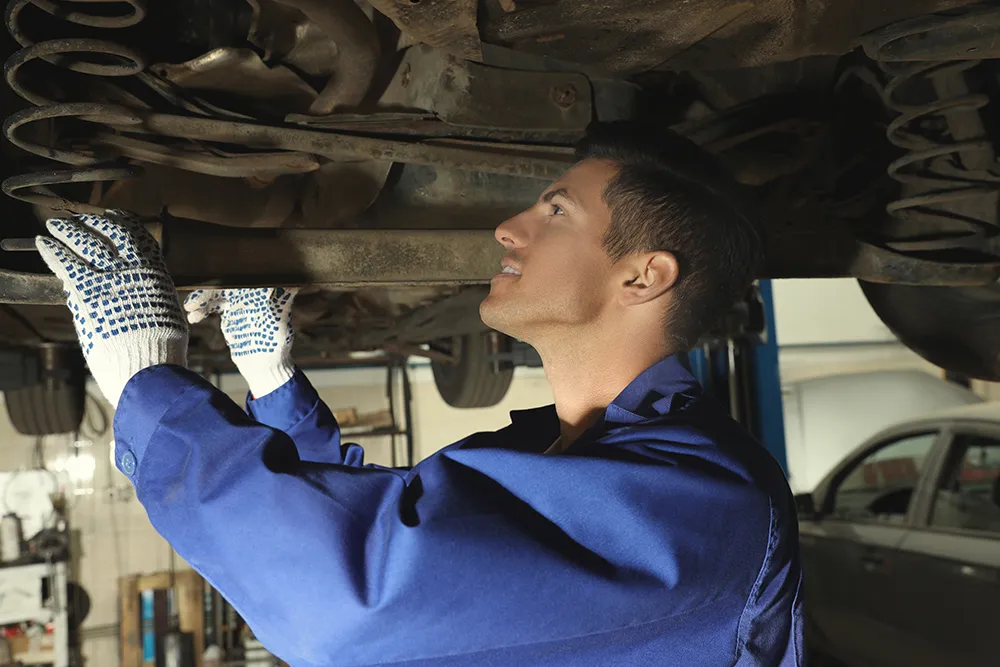If you’re experiencing a bumpy ride or hearing strange noises coming from your vehicle, it might be time to consider suspension repair. Your car’s suspension system plays a crucial role in ensuring a smooth and safe driving experience. In this comprehensive guide, we’ll delve into everything you need to know about suspension repair, including common signs of suspension issues, the importance of timely repairs, and the various components of a suspension system.
Signs That Your Suspension Needs Repair
- Uneven Tire Wear: If you notice that your tires are wearing out unevenly, it could be a sign of suspension problems.
- Bumpy Ride: A rough or bouncy ride, especially when driving over bumps or uneven roads, indicates potential suspension issues.
- Drifting or Pulling: If your car tends to drift or pull to one side while driving, it may be a symptom of suspension misalignment.
- Oil Leaks: Fluid leaks around the shock absorbers or struts can signify a need for suspension repair.
- Excessive Bouncing: When you press down on the front or rear of your vehicle and it continues to bounce, your shocks or struts may be worn out.
Importance of Timely Suspension Repair
Ignoring suspension issues can lead to a variety of problems, including:
- Reduced Handling: A compromised suspension system can affect your car’s ability to handle and maneuver safely.
- Increased Braking Distance: Worn-out shocks and struts can result in longer braking distances, posing a serious safety risk.
- Uneven Tire Wear: Suspension problems can cause your tires to wear out unevenly, leading to premature tire replacement.
- Compromised Stability: A faulty suspension system can affect your vehicle’s stability and increase the risk of rollovers in extreme cases.
Components of a Suspension System
A typical suspension system consists of several key components, including:
- Shocks and Struts: These components help absorb shocks from the road, ensuring a smoother ride.
- Springs: Springs support the weight of the vehicle and help control its motion.
- Control Arms: Control arms connect the suspension system to the vehicle’s frame, allowing for movement.
- Bushings: Bushings reduce friction between moving parts and provide cushioning.
- Sway Bars: Sway bars help minimize body roll during cornering, enhancing stability.
Suspension Repair Process
When you bring your vehicle in for suspension repair, a qualified technician will typically follow these steps:
- Diagnosis: The technician will perform a thorough inspection to identify the root cause of the suspension issues.
- Component Replacement: Depending on the diagnosis, worn-out shocks, struts, or other components may need to be replaced.
- Wheel Alignment: Proper wheel alignment ensures that your tires wear evenly and your vehicle drives straight.
- Road Testing: After the repairs are completed, a road test is conducted to ensure that the suspension system is functioning correctly.
Final Thoughts
Maintaining a healthy suspension system is essential for a safe and comfortable driving experience. By paying attention to the signs of suspension issues and addressing them promptly, you can prolong the lifespan of your vehicle and ensure optimal performance on the road. If you suspect that your car may need suspension repair, don’t hesitate to contact a professional auto repair shop for a comprehensive inspection and timely repairs. Your safety and driving comfort depend on it!



